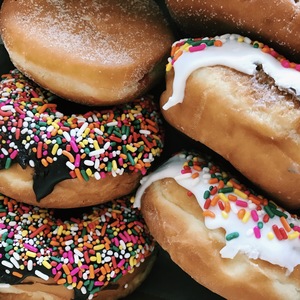Seltzer, Tonic, Club Soda, Sparking Water. They’re all basically the same thing right? I guess it depends upon how loosely you’re using the term “basically,” because when it comes down to it, while some of them are incredibly similar, each one of these carbonated water beverages is its own distinct entity. As an avid seltzer drinker, I am passionate about the awareness of such differences.
The common denominator between all of these beverages is that they all are carbonated water based. Carbonated water is exactly what it sounds like: it is simply water that has been carbonated. This carbonation, or the bubbles in the water, can be man-made through additives (like CO2 gas) or naturally occurring (minerals). The source of carbonation is the main difference between seltzer, club soda, and sparkling mineral water. Tonic is pretty different than the rest, but that I’ll get to at the end.
Seltzer
water + CO2
Seltzer water is as simple as it gets. It is literally just carbonated water. The carbonation is man-made through the addition of “bicarbonate” or CO2 into the water to create bubbles. Seltzer water has no added salts or minerals. The bubbles in seltzer water are large, and seltzer is great to use for mixed drinks since it is completely flavorless (unless you get a flavored variety). Seltzer comes in a variety of flavors and is a great, healthy substitute for soda.
Club Soda
H2O + added mineral ingredients + CO2
Club Soda is a step up from seltzer water. It still gets its bubbles from man-made carbonation through the addition of CO2 but also contains minerals such as sodium citrate, potassium sulfate, or disodium phosphate. I personally don’t see a huge difference between club soda and seltzer, but I’ve read that some find club soda to have more of a mineral taste.
#SpoonTip: Club soda is great to use in mixed drinks to cut calories.
Mineral water
natural spring water + natural minerals + CO2
Mineral water is simply spring water full of natural minerals such as sulfur and salts. The bubbles in sparkling water are not due to additive carbonation but rather are completely natural due to the inherently large amounts of mineral salts it contains, like calcium carbonate. I find the bubbles in mineral water to be smaller and somewhat less satisfying, but they do leave less air in the stomach.
Tonic Water
Water + quinine + CO2
Tonic water, while it’s both carbonated and technically a water, is not comparable on the makeup or flavor spectrum to the other waters on this list. Tonic water contains quinine, a compound used in malaria medication, which is why it has a bitter taste.
Fun fact: Before tonic was used with its infamous match made in heaven (gin), it was actually used for its medicinal qualities. It was used as an anti-malarial beverage and for treating leg cramps.
In the end, tonic water is not the same as other carbonated water beverages: it is bitter and filled with calories. Tonic has more calories because it is filled with sugar for flavor. Believe it or not, tonic has almost the same number of calories as a can of Coca-Cola.




